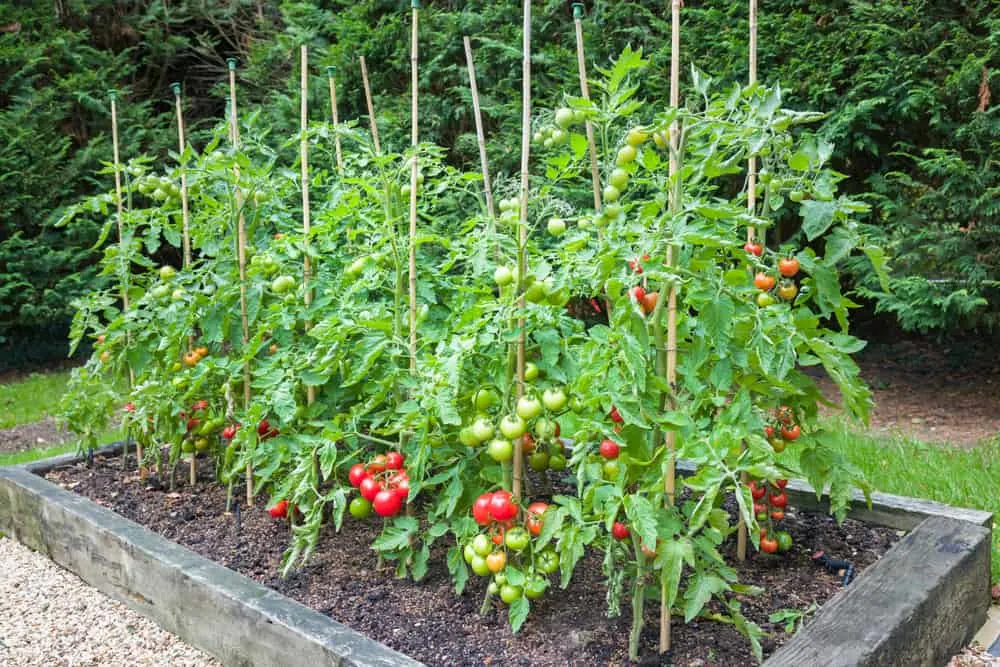
The ground is barely thawed, and my mouth is already watering, dreaming of all the gorgeous, delicious tomatoes that will be harvested this summer.
After pouring over the seed catalogs, and checking out last year’s tomato seed collection, it is time to turn the attention to the question, where to plant the tomatoes this spring?
Benefits of Growing Tomatoes in Raised Beds
Tomatoes love heat. Seedlings and young plants especially love warm soil temperatures. This is where growing tomatoes in raised beds is particularly useful. The soil in raised beds warms up faster, giving tomatoes a welcome head start.
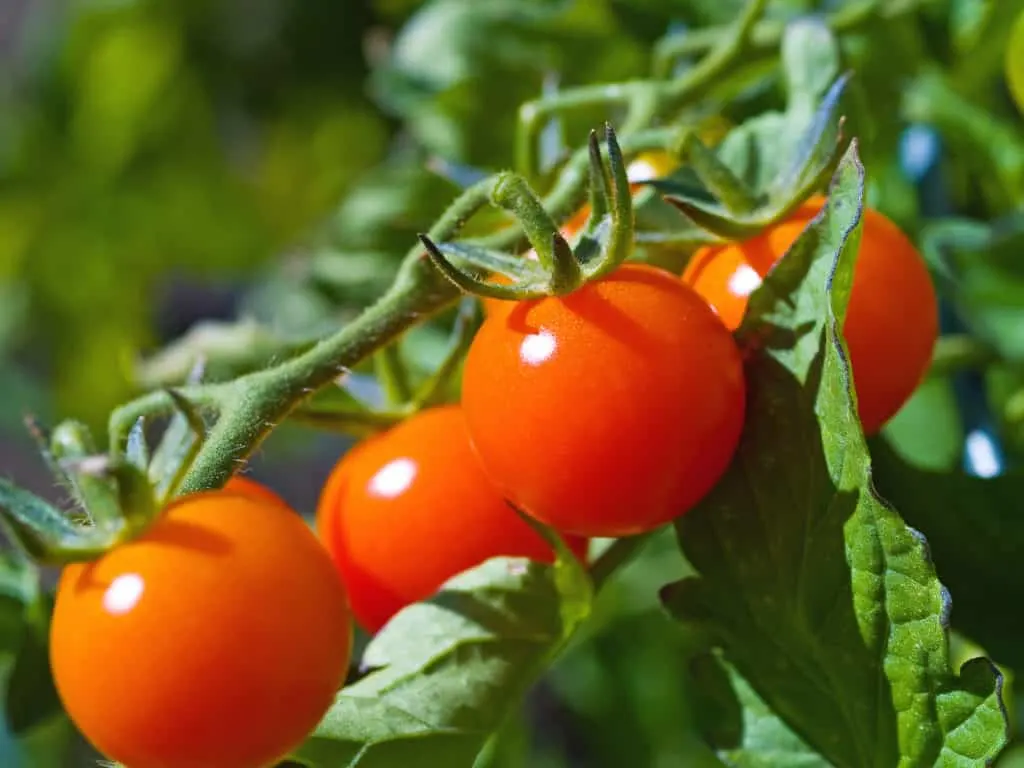
Where to Grow Tomatoes
Because tomatoes are sun-loving, warm-season plants, they do best in full-sun, and will thrive in a south-facing part of the garden.
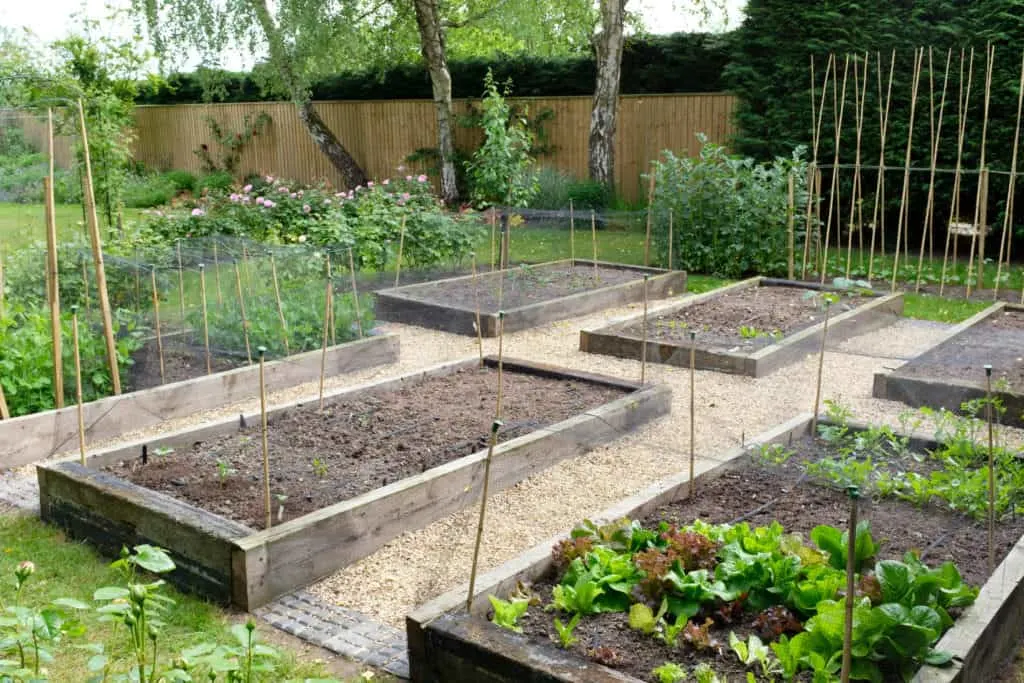
How to Prepare a Raised Bed
Build the raised bed on ground that is free of weeds and is without competition from large plants, shrubs, and trees. Cultivate the ground where the raised bed will go to ensure adequate drainage.
The raised bed should be at least 12 inches tall for best results. Fill the raised bed with high-quality garden soil. For tomatoes, the soil should be slightly acidic, light, well-draining, and rich in nutrients, humus, and organic matter.
There are many options when choosing what the sides of the beds can be made of. Wood-sided raised beds can be a great choice. Metal, concrete, brick, or stone are also interesting options. The material you choose can help to develop a tidy, easy-to-access garden.
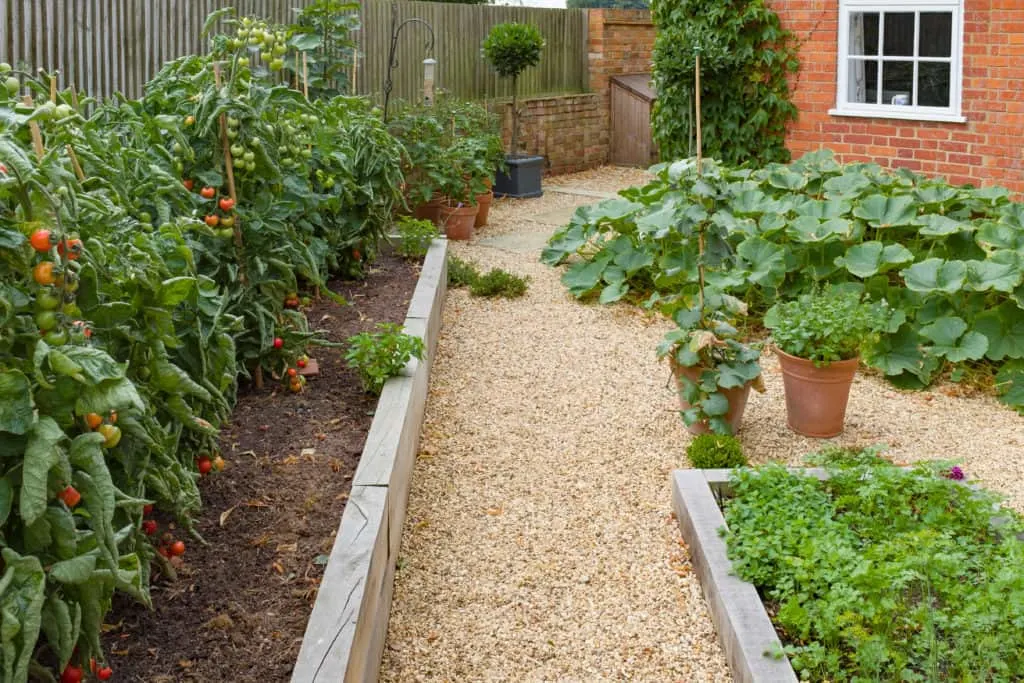
You might even just make mounded raised beds that are flat on top. This can be a nice low-cost solution that lets you try out a location before building something more permanent. If you try this, you may need to cultivate the sides a couple of times during the growing season to keep it weed free. It may also be necessary to repair any eroded areas.
Growing Bush Tomatoes in a Raised Bed
Bush or determinate tomato plants are a great, space-saving option that do especially well in smaller raised beds. They require less pruning than their unwieldy vining counterparts and usually remain a manageable size. Most bush tomato plants can be supported with tomato cages.
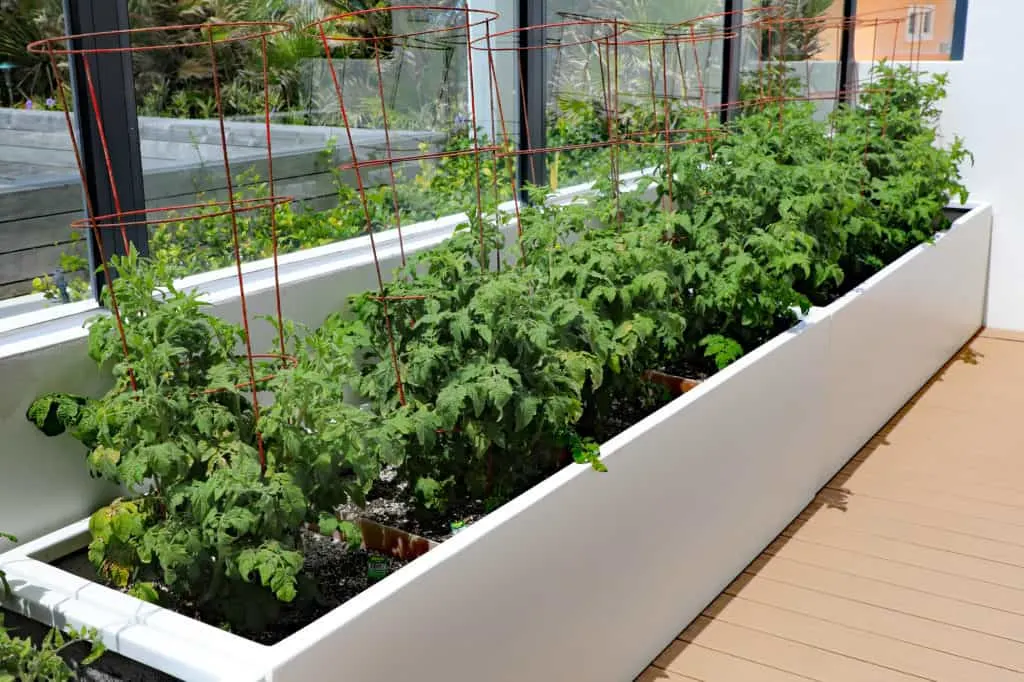
Growing Vine Tomatoes in a Raised Bed
For indeterminate or vine tomatoes, these require support. Having this in mind at the beginning stages of building the raised tomato garden will help determine where the raised bed will go, and what to build the raised bed out of. A trellis or other system of support can be built right into the sides of the raised beds at the beginning, making it strong enough to hold up even the most prolific, vigorous tomato vines.
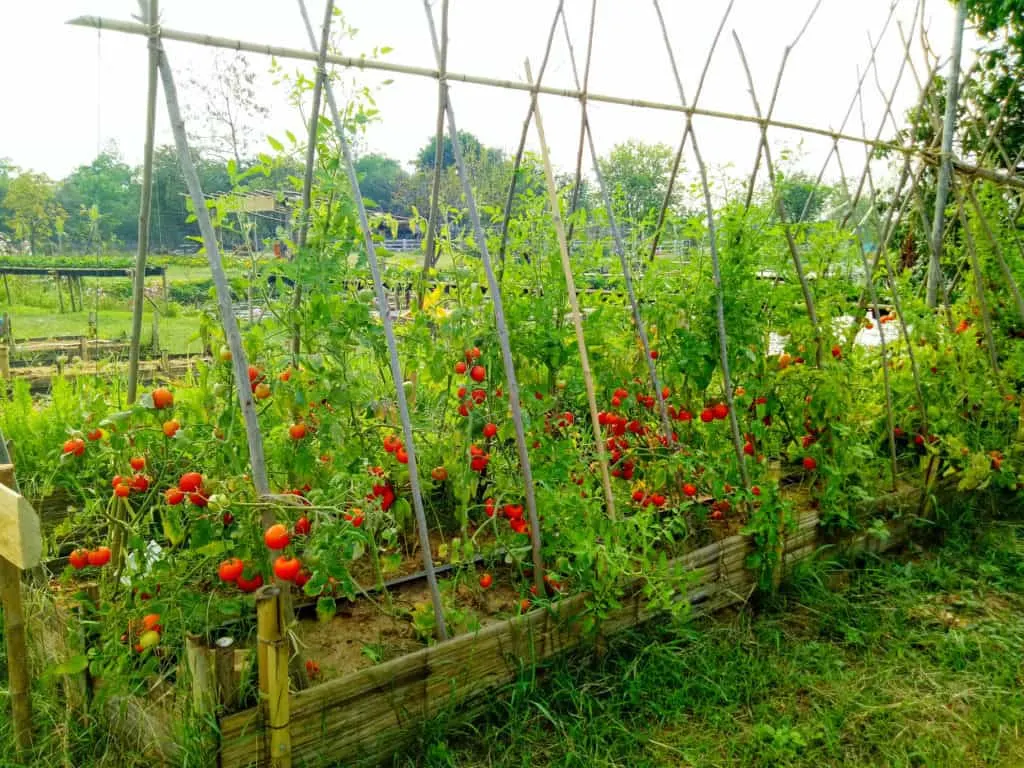
Grow Tumbling Tomato Varieties In Raised Beds
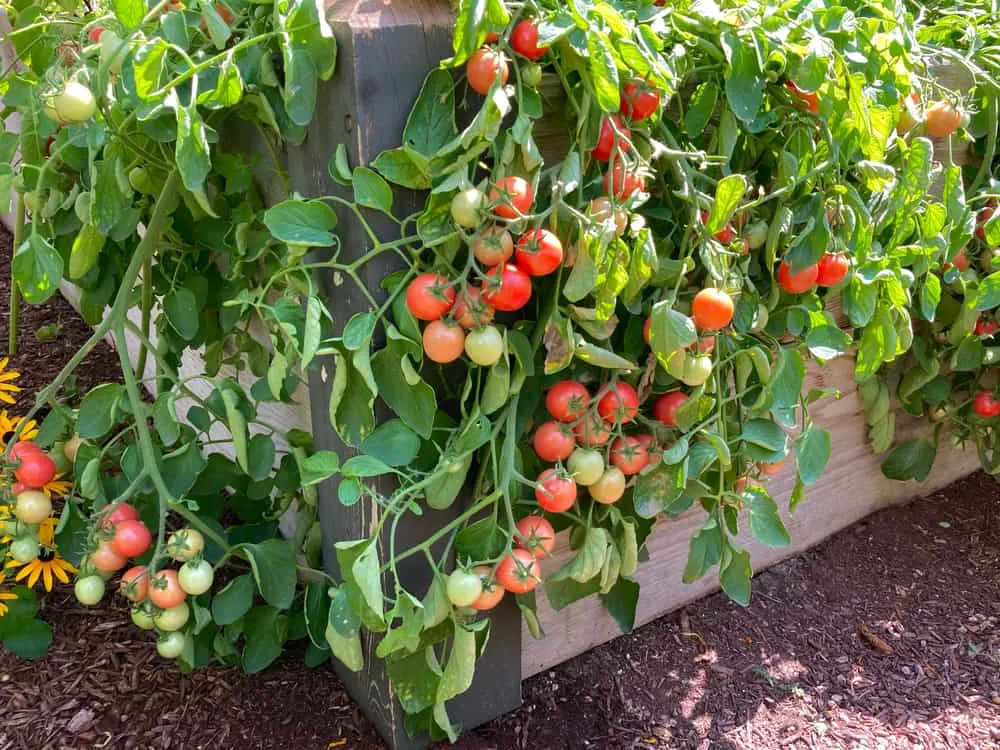
One clever idea is to grow a tumbling variety of tomato in the edges of your raised beds. Allow the branches to cascade down the sides of your raised beds.
Here’s a guide to the best tumbling and cascading varieties of tomato plants.
When to Plant Tomatoes Outside
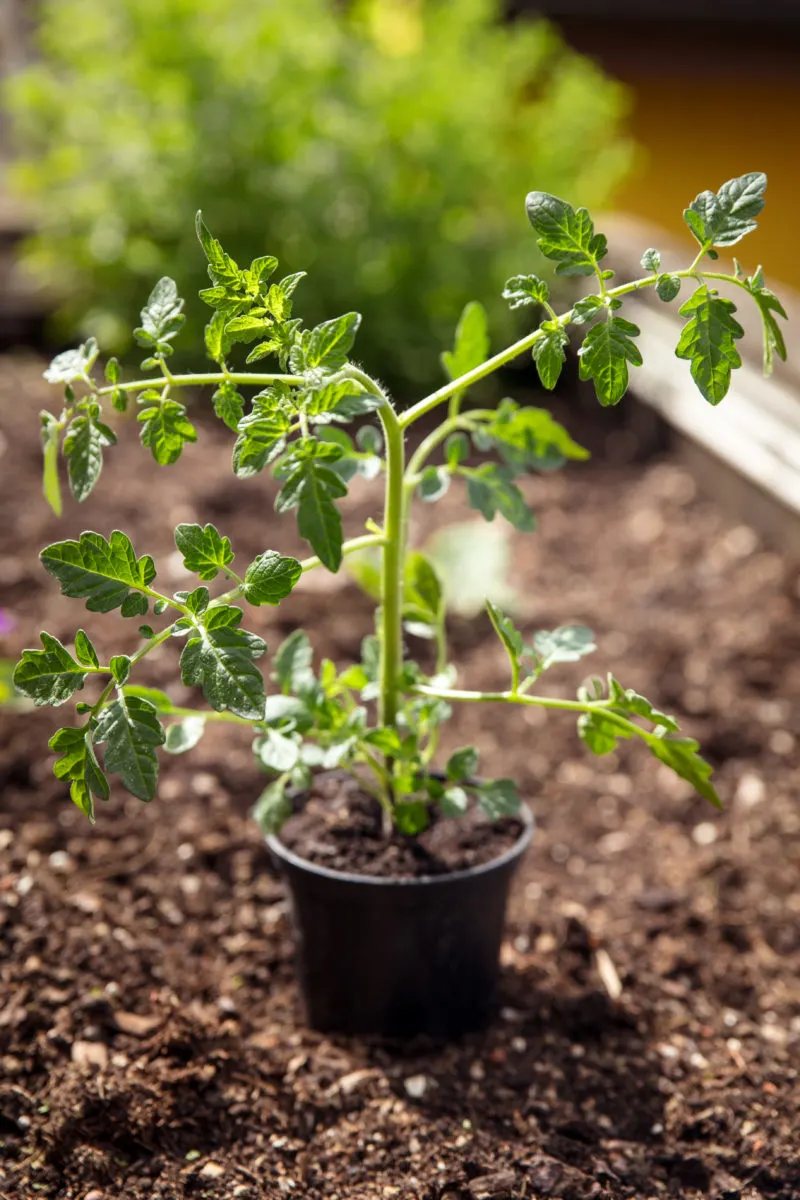
Tomatoes can be planted outside after fear of the last frost is past and nighttime temperatures are above 50° F (10° C). They thrive in warm soil that is over 60° F (15° C). In a raised bed, this temperature can be sooner than ground-level soil.
Make sure plants are hardened off before planting outside. This means getting them ready for the outside world. Exposing tomatoes to wind and some fluctuating (non-freezing) temperatures will make them more resilient to face full-time life outside.
Spacing Tomato Plants In Your Raised Bed
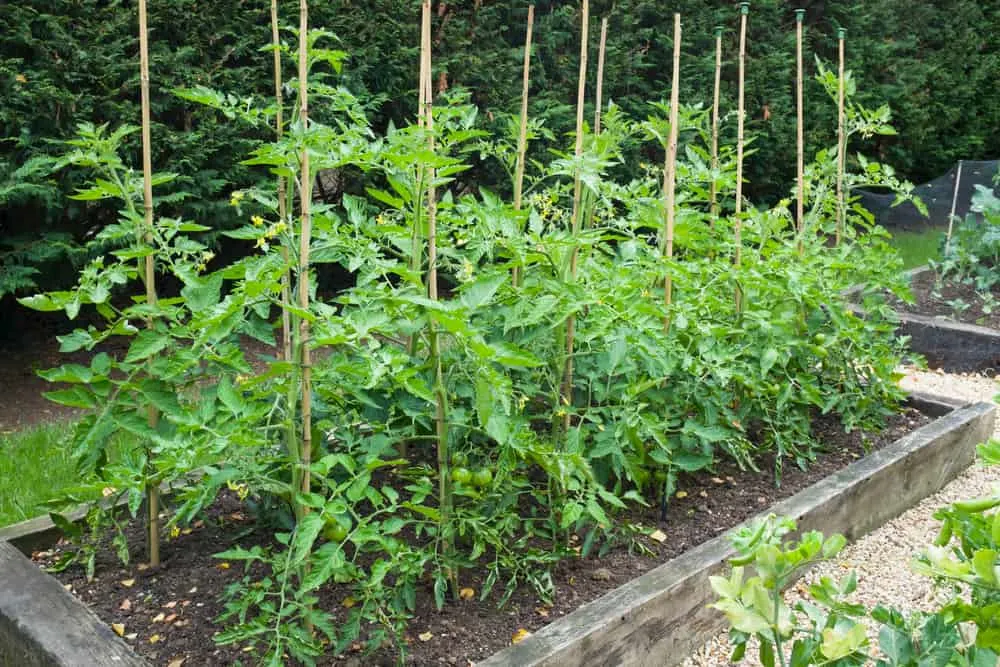
Spacing your tomato plants depends on the type of tomato plant you are growing.
Bush tomatoes – or determinate varieties – should be planted two feet apart to allow enough space to spread without intertwining.
Vine tomatoes – or indeterminate varieties – can be grown a little closer together allowing 18-24 inches between plants.
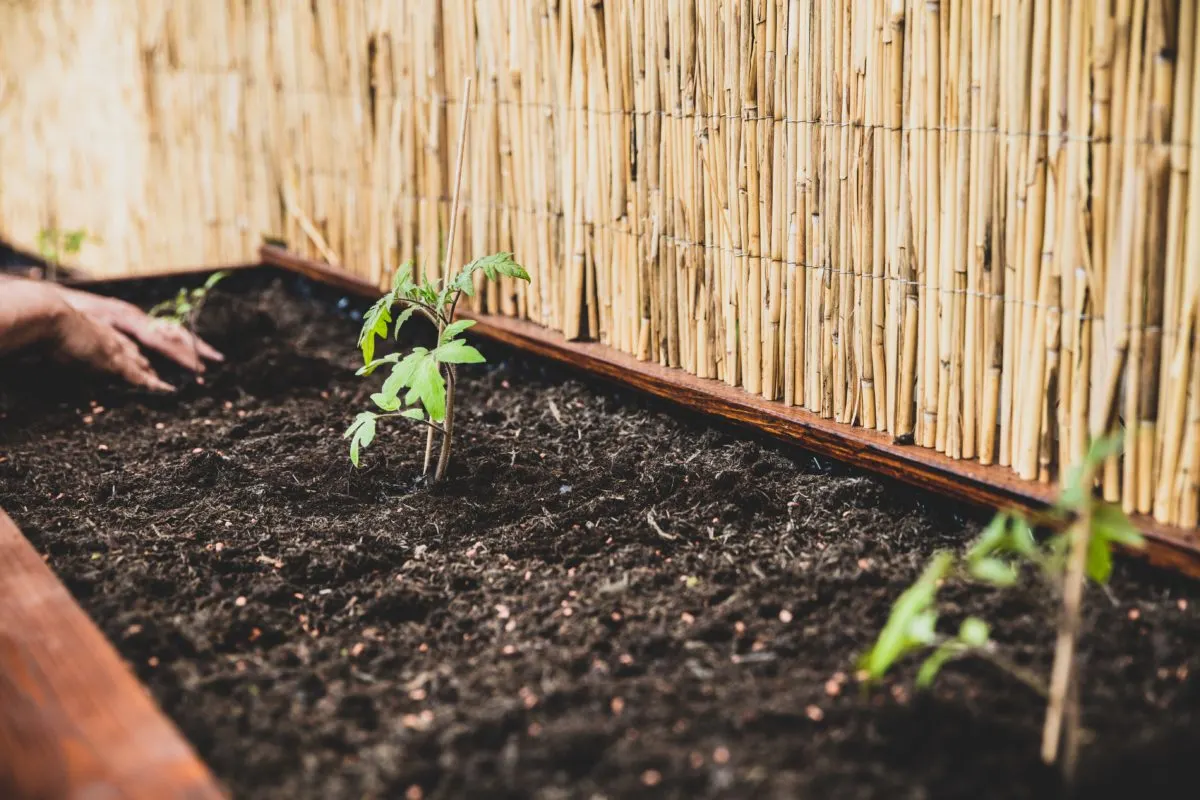
Leave at least 3 feet between rows of tomato plants. Consider growing a small beneficial companion plant in this space, such as marigolds. Marigolds have been found to reduce pests when grown alongside tomatoes.
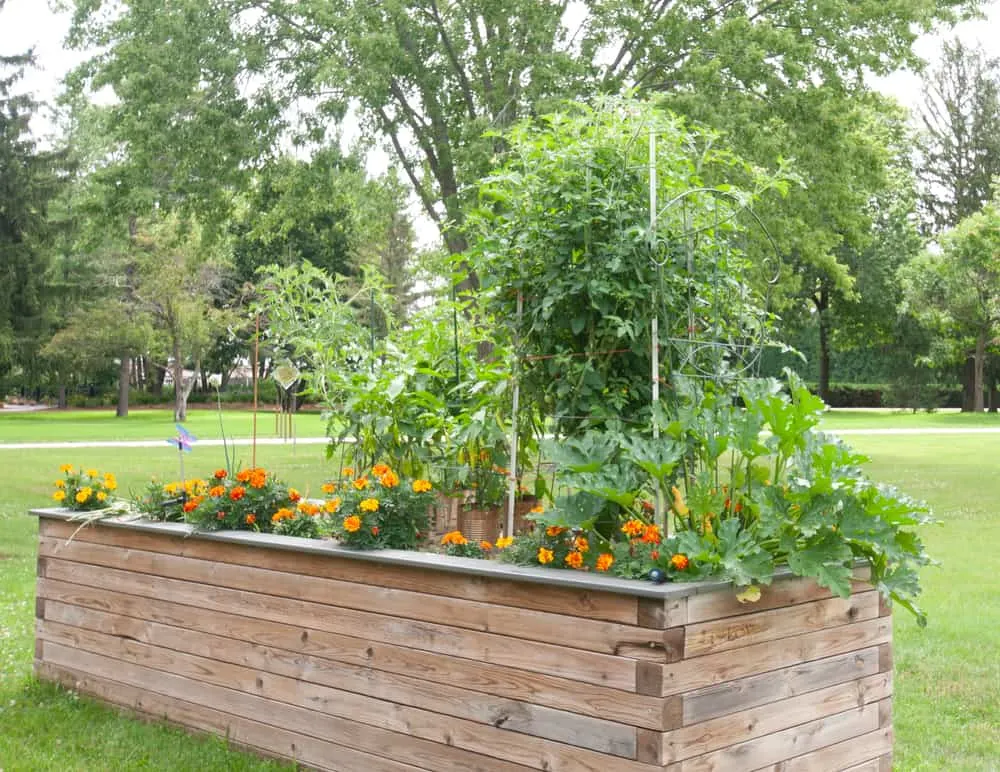
Planting in the Raised Bed
Tomatoes have a wonderful ability to sprout roots all the way along their stems. You can give your tomatoes an incredible competitive advantage by burying one to two thirds of the plants’ stem when you plant it. So, dig a hole quite deep.
In the hole, you can put extra nice gifts for your young tomato plants. I’ve heard of putting cracked eggshells in the hole, or even crushed Tums for extra calcium. Phosphorus is important for roots and blooms and particularly beneficial for tomatoes, so a handful of bonemeal fertilizer at the beginning might also be helpful.
Trim the bottom few leaves so the plant focuses its energy into its top parts.
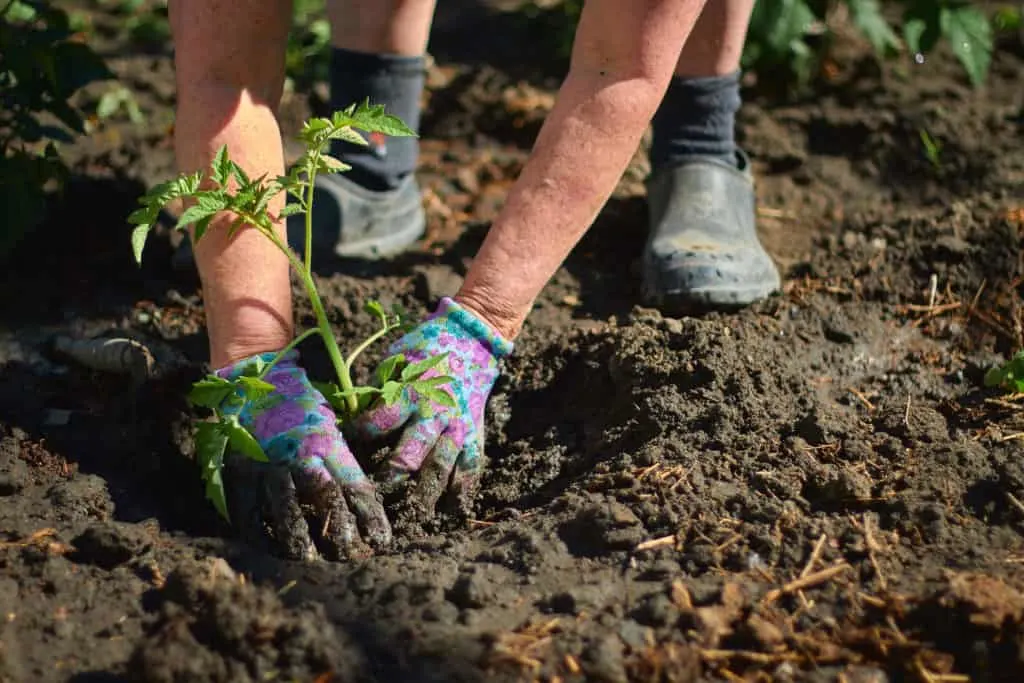
Plant the tomato in a mound with a well around it. This will deter water from splashing back onto the stem and bottom leaves. Water splashed onto the stem and bottom leaves can make the plant more susceptible to disease.
Giving Tomatoes a Great Start in Their Raised Garden Bed
The rule of thumb when growing tomatoes is to spoil them when they are young. It also helps to hold back when they are mature and fruiting.
Watering
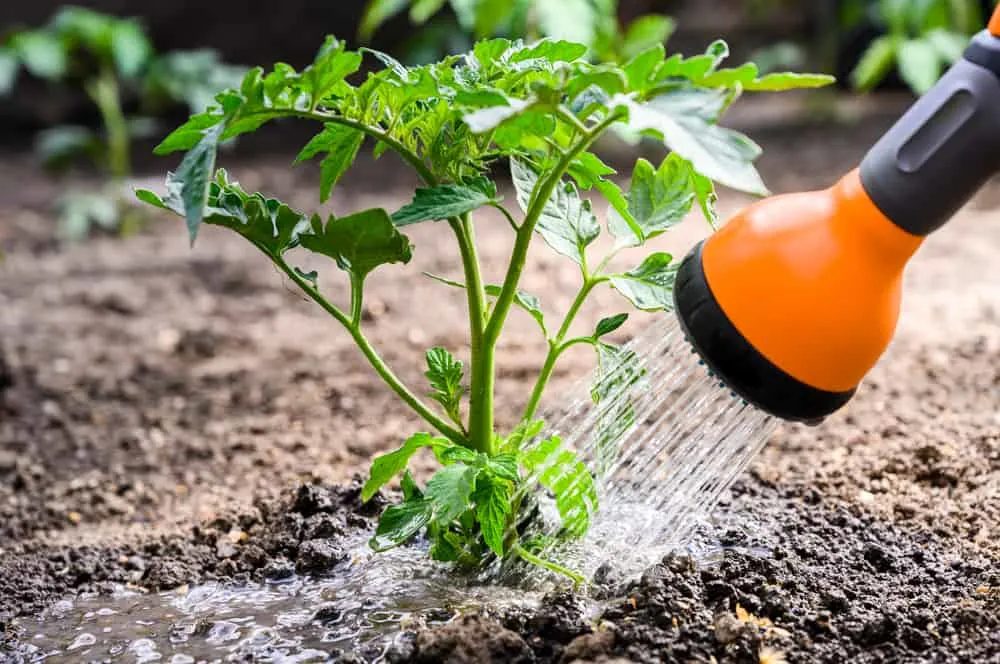
Keep young tomato plants evenly moist. Raised garden beds have a tendency to dry out faster than gardens that are at ground level. This can be a benefit, because tomatoes do not like to be waterlogged but young plants don’t need the extra stress of drying out.
Having a good watering schedule and keeping an eye on the moisture levels around young tomato plants will help keep them happy.
Feeding
Use a well-balanced natural or organic fertilizer or compost tea during watering about once or twice a week will help tomato plants grow strong and healthy.
Using a root and bloom fertilizer such as a bonemeal based organic fertilizer every four weeks will encourage the tomato plants to make more flowers which will become more fruit.
Pruning
Bush or determinate tomatoes may only need a little bit of pruning. These tomatoes grow a finite number of branches, so often we want to keep all the ones the tomato plant makes.
Vine or indeterminate tomato plants may require ongoing pruning, depending on the style of garden and how long the tomato or frost-free season is.
These toms can make long branches which produce flowers and fruit all along each stem. Then, at each leaf node or branch, new branches emerge, which can also become long, and produce flowers and fruit.
Sounds great, right?
Allowing all these branches to grow is hard on the plant, can be messy, and hard to manage. Worst of all, it can result in smaller fruit and less flowers, overall. Letting the plant focus on 1 to 5 main stems, and pinching off any new branches, will let the plant focus on producing the best flowers and gorgeous fruit.
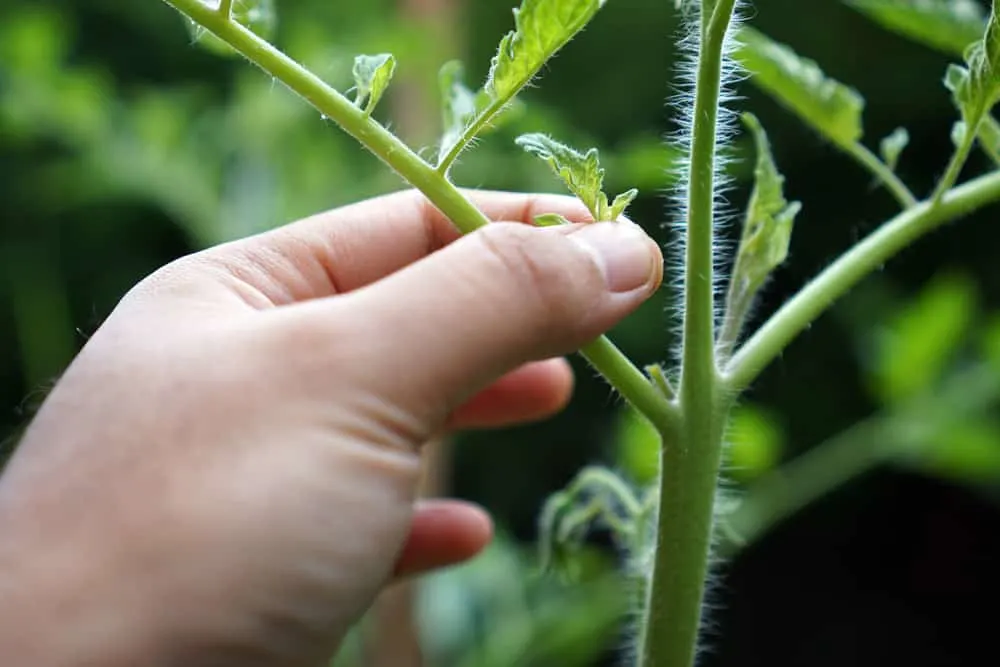
Tickle Your Tomatoes!
Yes, you heard that right. Tickling your tomato flowers will help pollinate your tomatoes so that you’ll have bumper crops.
Unlike with some other flowers, bees and insects pollinate tomatoes, not by sharing pollen flower to flower but by buzzing. The buzzing vibrations bees give tomatoes allows their unique flower to self-pollinate which lets them set fruit.
Spending a few minutes in the morning, visiting your tomato plants, and tickling the open flowers will help get this vital job done.
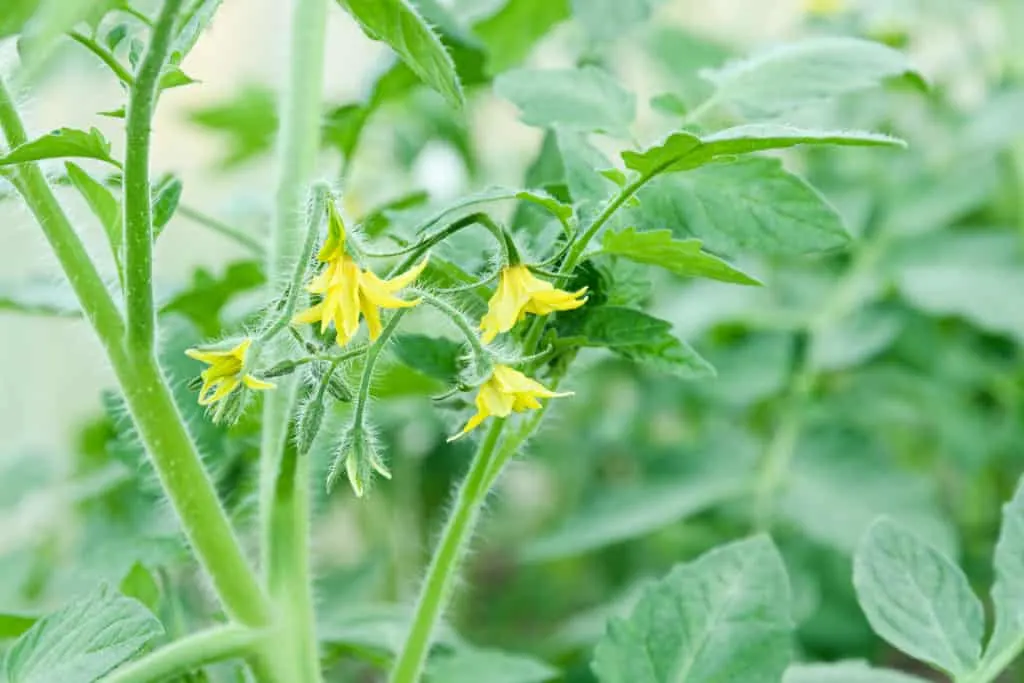
The Really Fun Part – Harvesting
So many kinds of tomatoes to choose from, each with their perfect uses. Cherry tomatoes can be picked and eaten right in the garden. Then there are tomatoes for sauces, canning, drying, slicing, salads, roasting.
Having a few different kinds to cover all the possibilities is highly recommended. Having early and main season varieties can keep the harvest going for an extended period with a wide range of flavors, colors, and sizes.
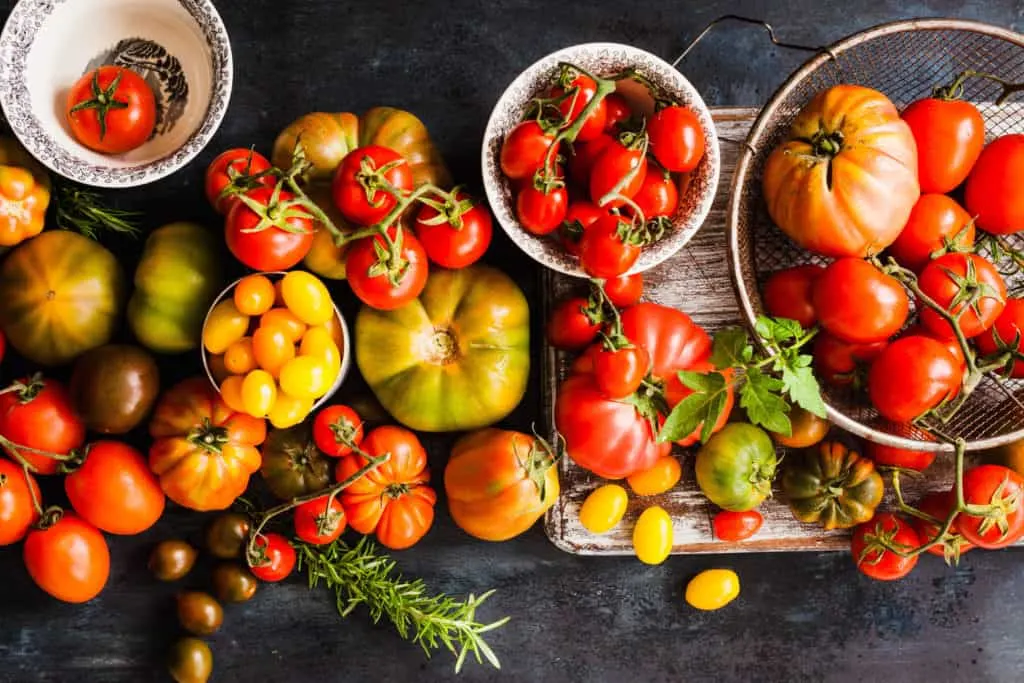
A couple little tricks to get things moving when our patience has almost run out, and we are watching every day for the first specks of red:
Use a red mulch or put red things in the garden. This sounds like a myth, but some folks swear by it. It miraculously teases the tomatoes to want to take on some ripe fruit colors.
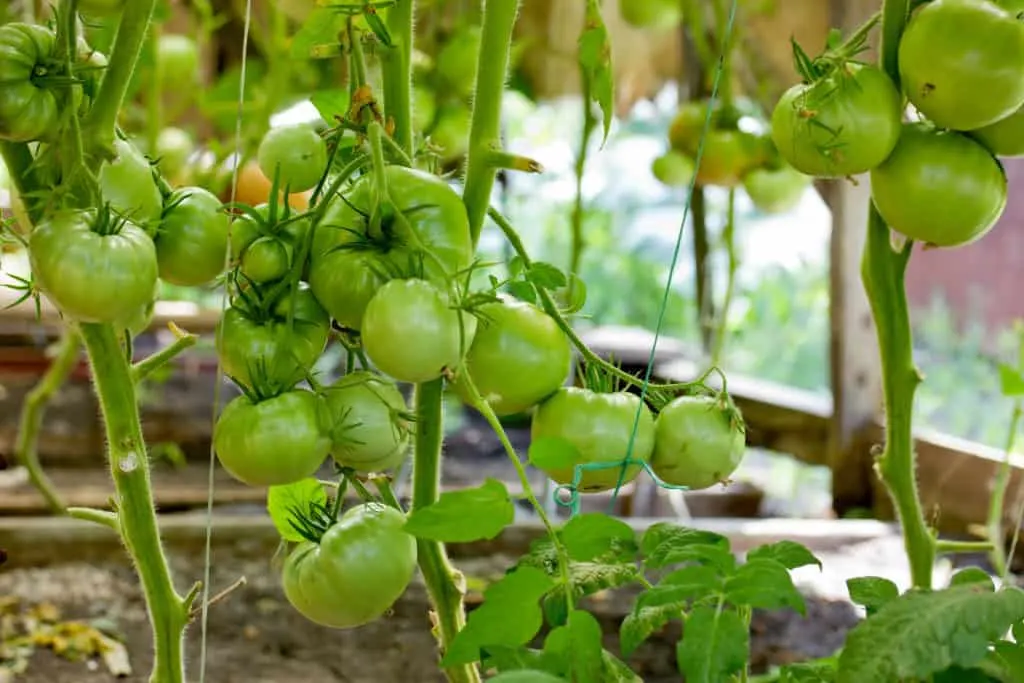
Start picking early. Somehow, picking a couple of the almost-ready fruit signals the plant to enlarge and ripen more fruit and even produce more flowers and fruit.
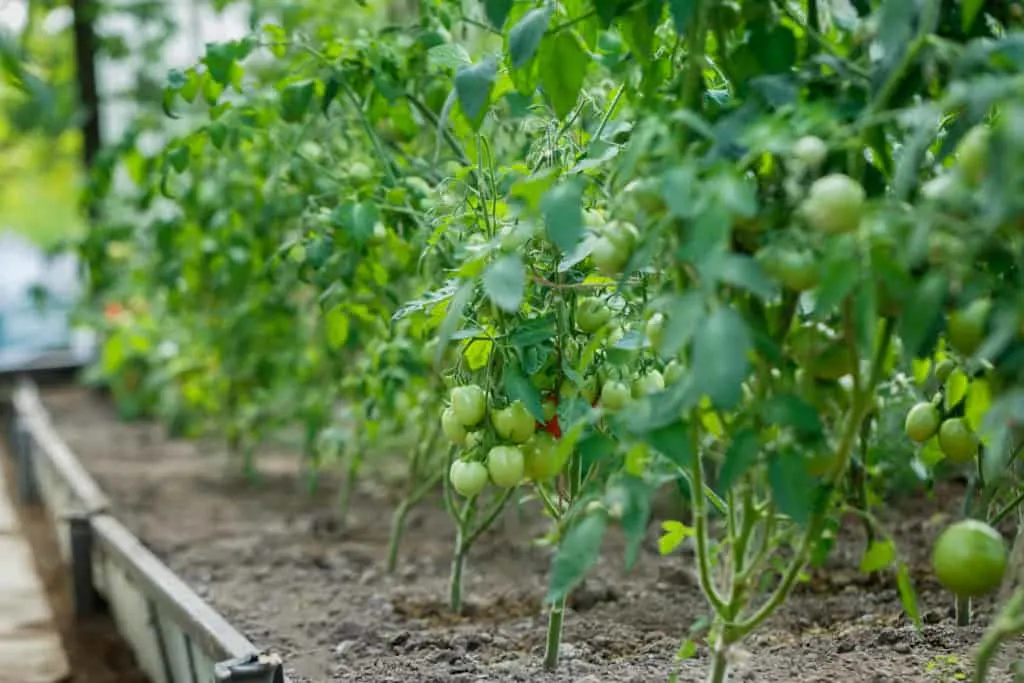
Let the plants dry out slightly. This signals the plants to hurry ripening and make more fruit also. This, of course, is easy to do in the raised garden bed as they can be more susceptible to drying out on their own.
At the End of the Season
When its over for tomatoes, its over. The first cold snap or frost can turn those beautiful globes into mealy mush. Being above the ground in the raised bed can make them even more at risk of damage from cold.
It is best to rescue all that hard-earned produce. Bring it inside and allow it to ripen. Please, keep them at room temperature if you can. The fridge or cold storage will rob your tomatoes of all that sun-soaked flavor.
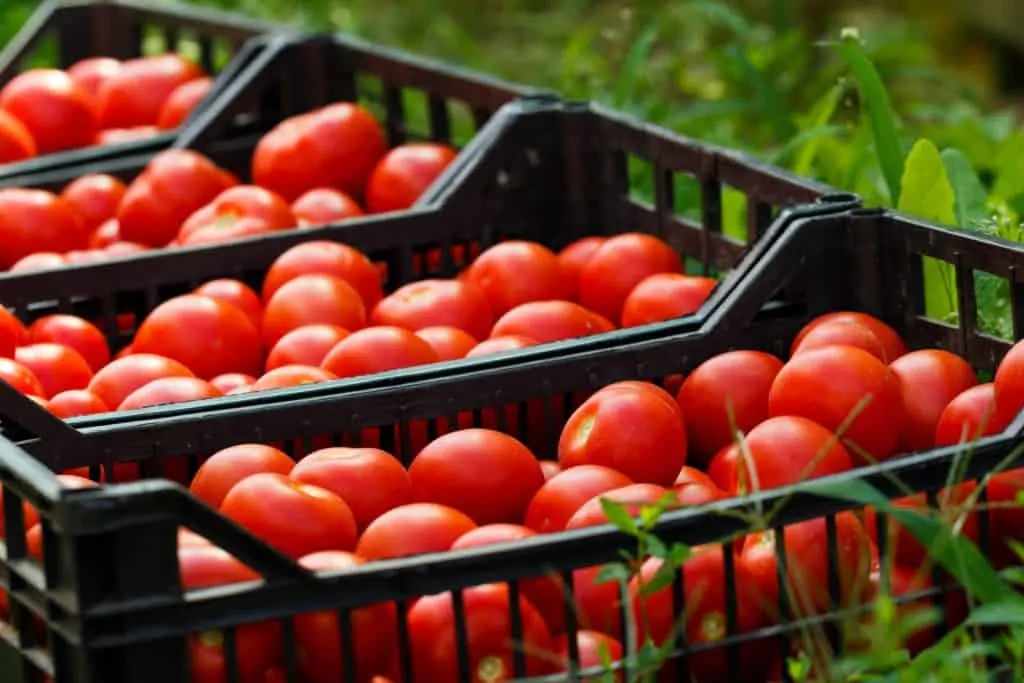
Notes for Future Disease Resistance
Tomatoes are from the nightshade family of plants. This makes them a little prone to having disease in their plant parts and in the soil where they grew. It is best to not put nightshade plants in the compost, (unless you are a master composter, and you make tons of it).
It is also best to grow tomatoes in a rotation. For best disease resistance, try not to plant them in the same spot for 3 years or so. In the raised bed, however, swapping out some of the soil and adding lots of new, organic matter, compost, and other soil amendments could allow you to disregard this general rule. If you have found the perfect tomato growing spot, this might be worth the effort.
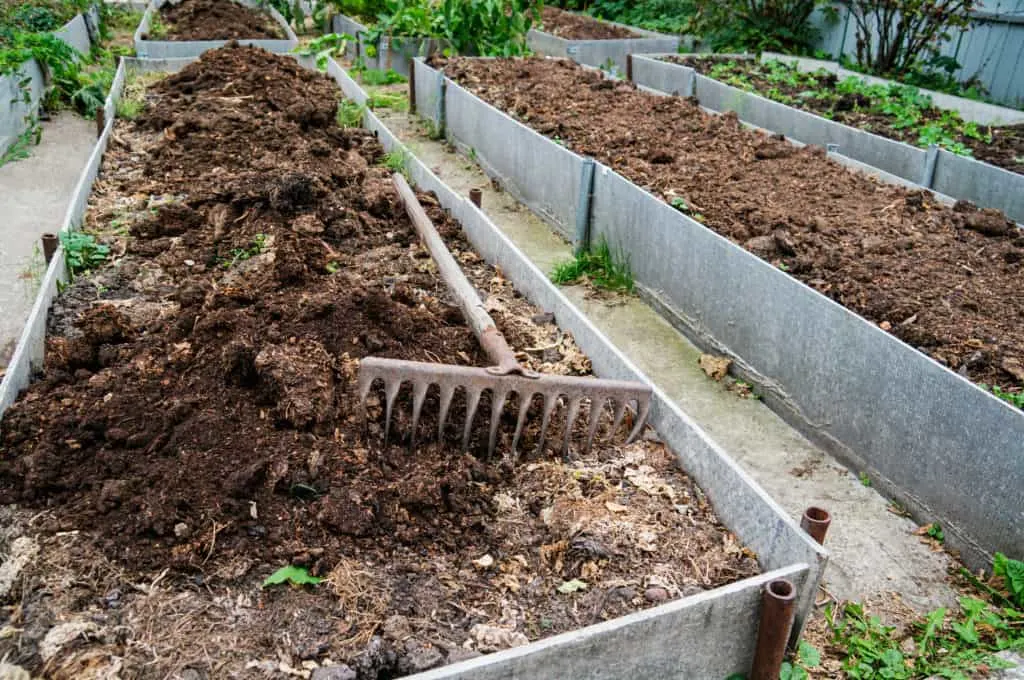
Putting a Raised Garden to Bed
Once all the lovely vines, stems, and root systems are removed, cultivate the soil, making sure it is weed free. This little step will have you smiling next season when you are getting ready to plant the raised bed again.
It is a little heartbreaking, taking the old plants down. It is much kinder than letting them freeze all winter. It is also much easier to clean up the area in the fall than to deal with the slimy frozen plant gunk in the spring.
Stay tuned for many exceptional ways to grow incredible tomatoes and wonderful ways to use huge tomato harvests.
